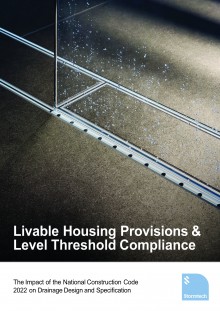Stormtech provides a range of information and support to assist with installation of our products.
Download Centre ›
Get quick access to technical downloads, including installation drawings and 3D BIM downloads.
Installation Videos ›
We provide a range of installation videos to make working with Stormtech systems simple.
Videos ›
- Stormtech Installation >
- Stormtech Threshold Drainage ›
- Sustainable Drainage from Stormtech ›
- Waterproofing Considerations ›
- How to Select Your Linear Drainage ›
Stormtech Certification ›
All Stormtech products are Greentag™ Certified and carry the Australian Watermark.
![]() Greentag™ Certification PDF
Greentag™ Certification PDF ![]() Watermark Certification PDF
Watermark Certification PDF
Order Forms ›
Select the appropriate Order/Quote Form to download and complete from the Order Forms page.
PDFs can be completed on screen using the Adobe Reader and either returned via email or printed/faxed - see our Contact page.

